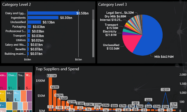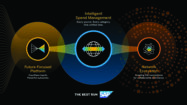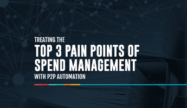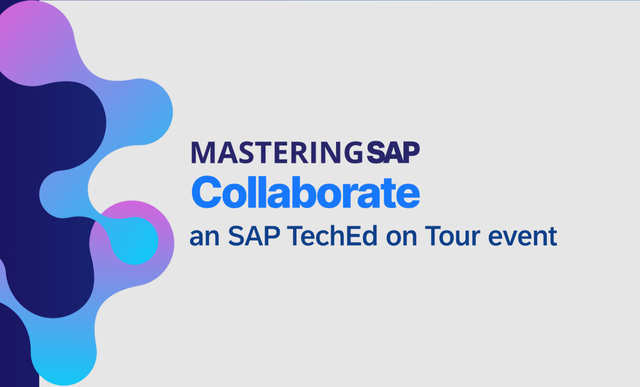SAP Spend Analysis
Filter By
Browse By
- SAP Analytics and AI
- SAP Application Development and Integration
- All SAP Application Development and Integration
- SAP ABAP
- SAP ABAP Development Tools
- SAP ABAP Test Cockpit
- SAP API Management
- SAP BAPI
- SAP Basis
- SAP BRF
- SAP Business Application Studio
- SAP CMS
- SAP Design Studio
- SAP Development Tools
- SAP DevOps
- SAP EAI
- SAP EDI
- SAP Extension Suite
- SAP Fiori
- SAP Fiori Elements
- SAP Integration Suite
- SAP Low Code Application Development
- SAP Low Code Automation
- SAP Netweaver
- SAP Release Management
- SAP UI5
- SAP Web Application Server
- SAP Web IDE
- SAP Business Process Management
- SAP Center of Excellence
- SAP CIO
- SAP Customer Experience
- SAP Data and Data Management
- All SAP Data and Data Management
- SAP BW
- SAP BW/4HANA
- SAP Crystal Reports
- SAP Data Archiving
- SAP Data Center
- SAP Data Governance
- SAP Data Integration
- SAP Data Migration
- SAP Data Quality
- SAP Data Services
- SAP Data Strategy
- SAP Data Visualization
- SAP Data Warehouse Cloud
- SAP DMS
- SAP Document Control
- SAP EIM
- SAP ETL
- SAP ETL Tools
- SAP HANA
- SAP HANA Administration
- SAP HANA Deployment Infrastructure
- SAP HANA Studio
- SAP Master Data
- SAP Master Data Governance
- SAP MDM
- SAP Enterprise Architect
- SAP Enterprise Asset Management
- SAP ERP
- SAP Finance
- All SAP Finance
- SAP Accounting
- SAP AR AP
- SAP Asset Accounting
- SAP Billing Systems
- SAP BPC
- SAP BRIM
- SAP Cash Management
- SAP Central Finance
- SAP Controlling
- SAP COPA
- SAP Cost Center Accounting
- SAP Currency Risk
- SAP e-invoicing
- SAP FICO
- SAP Finance Automation
- SAP Advanced Financial Closing
- SAP Financial Consolidation
- SAP Financial Planning
- SAP FX Risk
- SAP General Ledger
- SAP Global Tax Management
- SAP Hyperion
- SAP Order to Cash
- SAP Payment Processing
- SAP Profitability Analysis
- SAP Rebate Management
- SAP S/4HANA Finance
- SAP SWIFT Compliance
- SAP Treasury Management
- SAP Universal Journal
- SAP Governance Risk and Compliance
- SAP Human Capital Management
- SAP Intelligent Technologies
- SAP Platform and Technology
- All SAP Platform and Technology
- SAP Business Technology Platform
- SAP Cloud
- SAP Cloud Connector
- SAP Cloud Integration Platform
- SAP Cloud Migration
- SAP Cloud Platform
- SAP Cloud Providers
- SAP Cloud Strategy
- SAP Digital Signature
- SAP Container Platform
- SAP HANA Enterprise Cloud
- SAP Digital Asset Management
- SAP Smart Forms
- SAP HEC
- SAP Digital Integration Hub
- SAP Hyperscalers
- SAP Infrastructure
- SAP Messaging
- SAP Quality and Testing
- SAP Security
- SAP Spend Management
- SAP Supply Chain Management
- All SAP Supply Chain Management
- SAP APO
- SAP Asset Management
- SAP Business Network
- SAP Digital Manufacturing Cloud
- SAP Digital Twin
- SAP EWM
- SAP IBP
- SAP Inventory Management
- SAP Label Printing
- SAP Logistics
- SAP Manufacturing
- SAP Manufacturing Automation
- SAP MES
- SAP MII
- SAP MM
- SAP MRO
- SAP MRP
- SAP Order Management
- SAP Plant Maintenance
- SAP PLM
- SAP Production Planning
- SAP S&OP
- SAP SD
- SAP SPM
- SAP Supply Chain Planning
- SAP Track and Trace
- SAP Transportation Management
- SAP System Administration
Spend Management: SAP Spend Analysis
Spend Analysis Defined
Spend analysis is the process of identifying, gathering, cleansing, grouping, categorizing, and analyzing your organization’s spend data. It is important because it converts raw data into actionable information. An organization should have a goal of decreasing procurement costs and improving efficiencies while increasing visibility and transparency. Visibility of spending and suppliers is critical to improve customer service and to consistently grow return on investment.
4 Stages in Spend Analysis are:
- Collecting
- Cleansing
- Classifying
- Analyzing
Spend Management: SAP Spend Analysis
Spend Analysis Defined
Spend analysis is the process of identifying, gathering, cleansing, grouping, categorizing, and analyzing your organization’s spend data. It is important because it converts raw data into actionable information. An organization should have a goal of decreasing procurement costs and improving efficiencies while increasing visibility and transparency. Visibility of spending and suppliers is critical to improve customer service and to consistently grow return on investment.
4 Stages in Spend Analysis are:
- Collecting
- Cleansing
- Classifying
- Analyzing
Rogue, maverick, and tail spend are common terms in the procurement business. They all mean roughly the same thing – unexpected, unpredictable, or unorthodox spending. This spending can happen when purchases are made outside of agreed supplier contracts, often ignoring defined procurement processes. The most immediate task of spend analytics is to provide transparency and insights into where money is spent. Data integrity is a central element in obtaining true transparency. A long-term plan of transparency is to increase supplier negotiation efficiency and effectiveness by having fact-based conversations.
7 Steps to Success are:
- Identify the objective
- Identify spend data sources
- Collect and consolidate data
- Clean the data
- Link suppliers and categorize spend
- Perform the spend analysis
- Rinse, reassess, and repeat.
Benefits of Spend Analysis are:
- Visibility into organizational spend
- Ability to define measures and track KPI’s
- Tool for supplier management and strategic sourcing
- Automation and simplification of contract management and renewal
- Control maverick buying.
There is an opportunity to consider how spend transparency, analytics, decision rules, alerts and warnings can help organizations respond faster to challenges. Automating the collection and analysis of spend data significantly helps save time and resources. Spend analysis is usually done through a dedicated software or one-off spend cubes. Generally, an enterprise resource planning (ERP) system solution is used to provide a single source of truth for business transactions.
Vendor partners helping companies of all sizes to drive better business decisions with software or data integration are: SAP, Qlik or Deloitte.
Key Considerations for SAPinsiders are:
- A Beginners Guide to Spend Analysis: Shashi Jina shares insights into spend analysis and why strategic sourcing is one of the most critical functions. Learn about the critical balance between the art of balancing cost while enhancing customer service.
- The Next Evolution of Spend Management: Drew Hofier of SAP shares an article on how spend management is ever evolving — from the elimination of paper, to electronic spend solutions, and the current move toward intelligent spend management.
- Intelligent Spend Management Insights: Watch the video to see how BI/data management in one unified place across every source and category can give insights to solve complex challenges of uncertainty.
5 results
-

- SAP Spend Analysis
 Premium
Premium
Spend Analysis and SAP MM
Reading time: 5 mins
A wide range of business processes falls under the SAP MM (Materials Management) module, from purchasing to inventory management. Such an extensive portfolio of business processes also means much data being generated and captured. As SAPinsiders highlighted in our research reports like Process Automation and SAP S/4HANA, as well as in Process Automation in Supply…
-

- SAP Spend Analysis
 Premium
Premium
The Future of Intelligent Spend Management for the Public Sector
The pandemic has put the public sector in a pinch. Ever-tightening government budgets require rigorous spend management and AP controls, even as demand for services remains high. Meanwhile, many public sector employees are working remotely, fundamentally shifting a key aspect of spend management and oversight. These challenges are not new, but they have been amplified…
-

The Next Evolution of Spend Management
Reading time: 11 mins
There are many variables that can complicate how SAP customers manage their spend, such as when significant portions of the workforce are external or when consumers have certain expectations for their travel and expense experience. Having a clear picture of every category of spend — whether that is travel, indirect, direct, or contingent labor and…
-
-

Direct Spend Management In The Intelligent Digital Supply Chain
Reading time: 1 min
Read IDC’s latest Industry Brief to find out how digital strategies for direct material sourcing improve cost efficiency, product quality and time to market.
-

Treating The Top 3 Pain Points Of Spend Management
Reading time: 1 min
This eBook will pinpoint the top three pain points associated with current spend management practices and explore how a holistic, AI-driven P2P automation solution can help alleviate them. Membership Required You must be a member to access this content.View Membership LevelsAlready a member? Log in here
Become a Member
Unlimited access to thousands of resources for SAP-specific expertise that can only be found here.
Become a Partner
Access exclusive SAP insights, expert marketing strategies, and high-value services including research reports, webinars, and buyers' guides, all designed to boost your campaign ROI by up to 50% within the SAP ecosystem.
Upcoming Events
-

Mastering SAP Collaborate, an SAP TechEd on Tour event
November 12 - 14, 2025
Sydney, New South Wales
Australia
View Event
Related Vendors
Your request has been successfully sent

